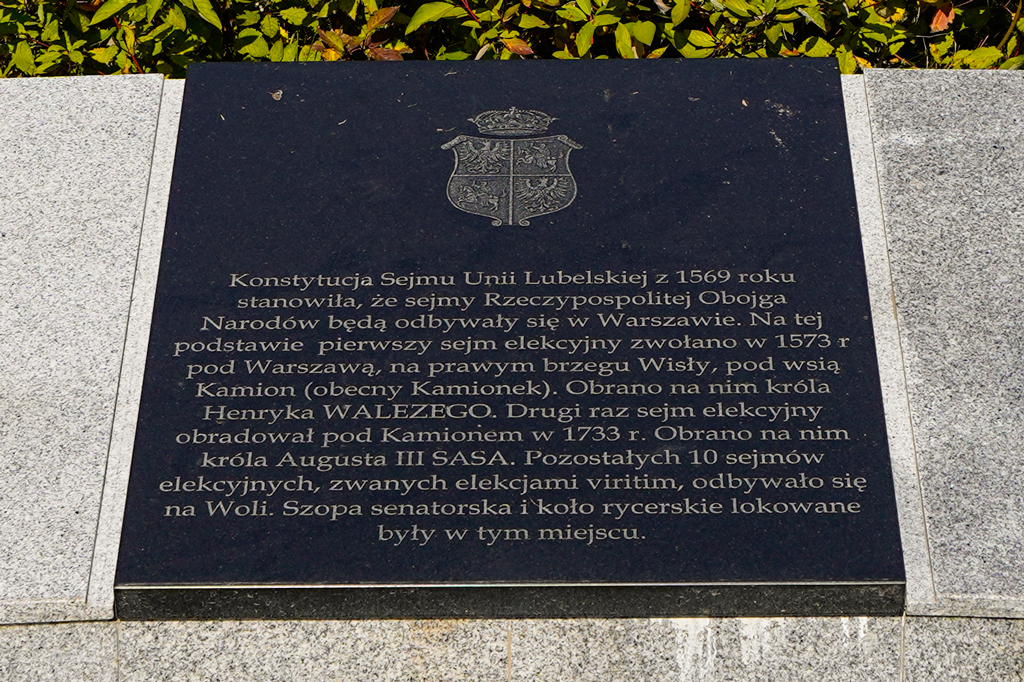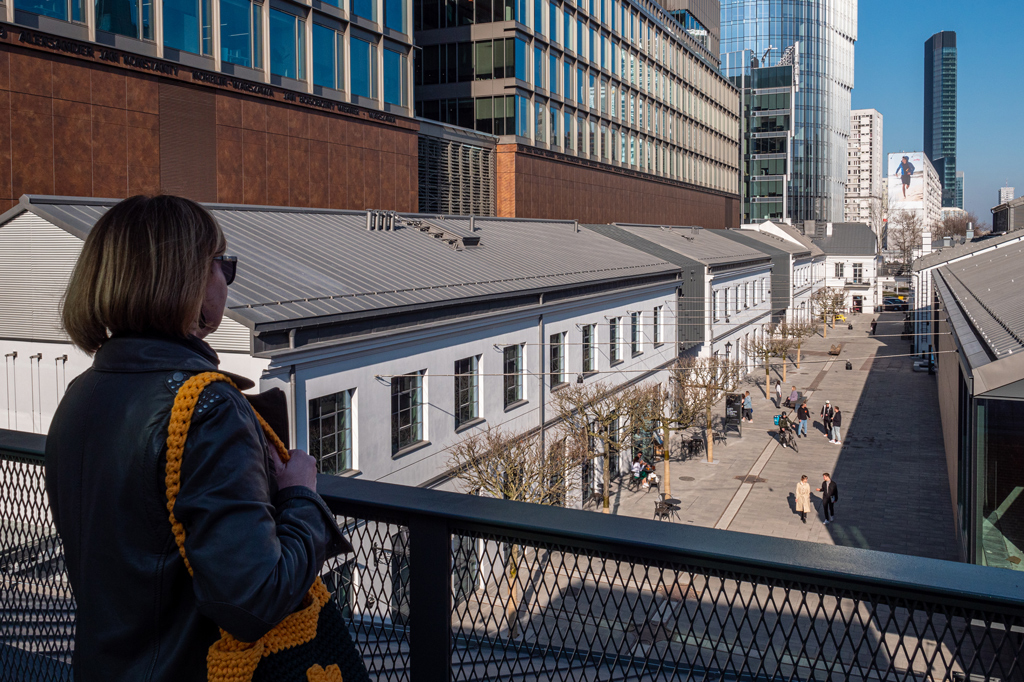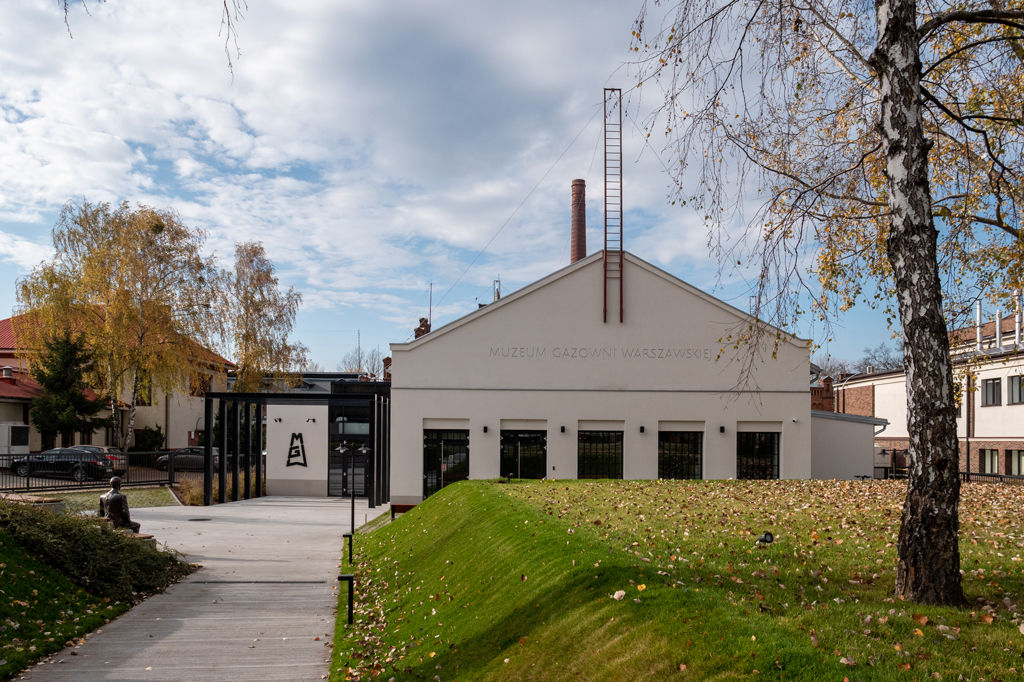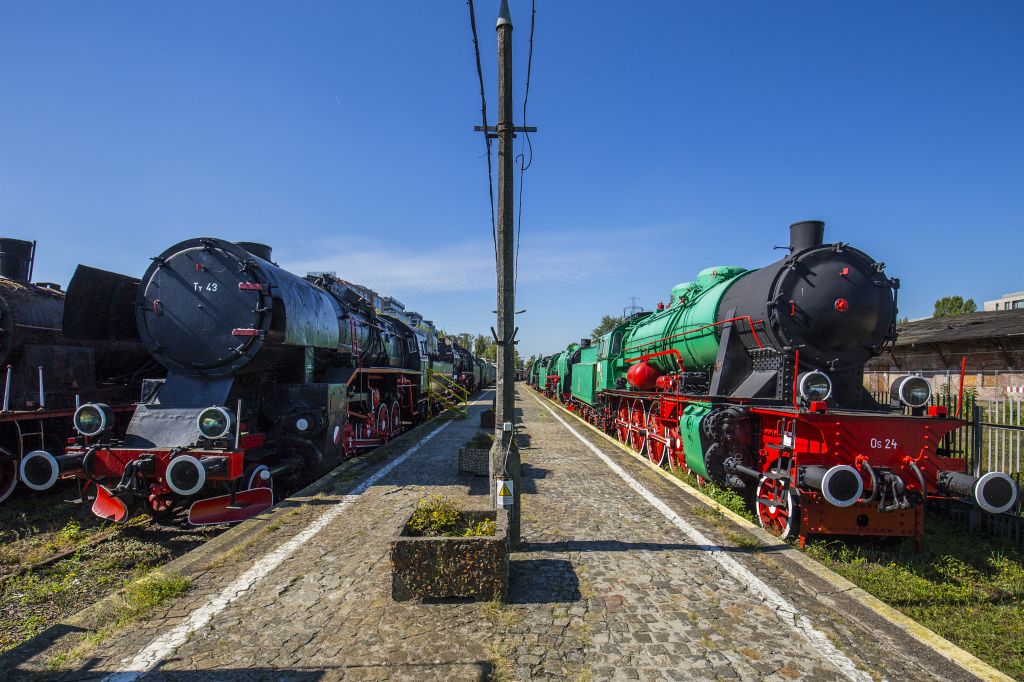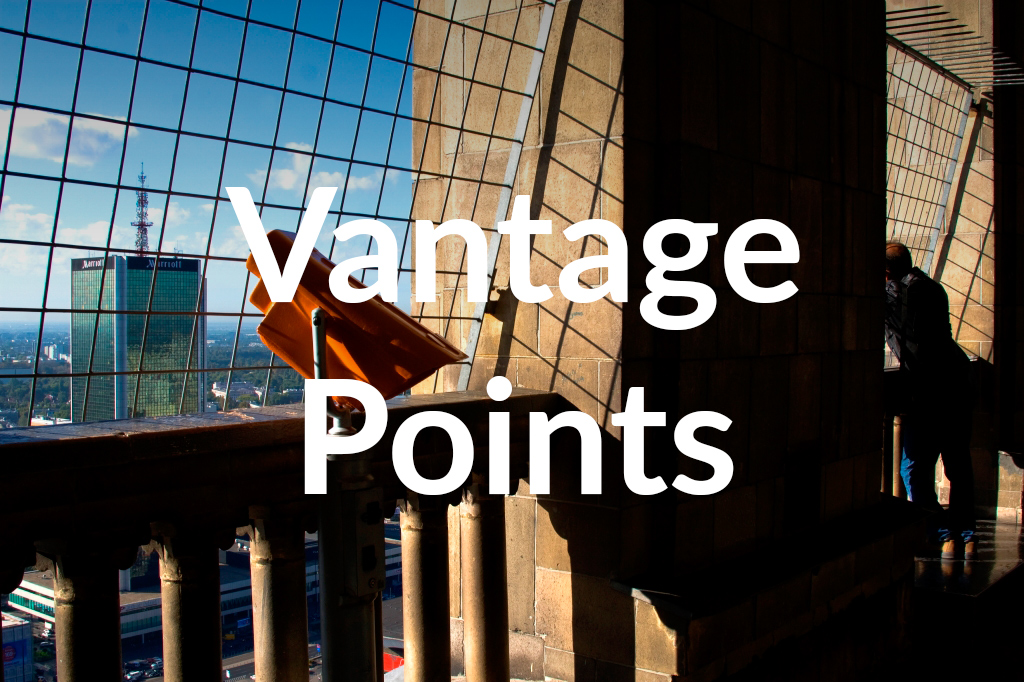Walk around Wola district
The name of the district derives from the largest ducal village near Warsaw, Wielka Wola, which dates back to the 13th century. It came to prominence in 1575, when it became the site of the election of the kings of Poland. In the 19th century, after the construction of the Warsaw-Vienna railway, Wola turned into an industrial suburb of Warsaw, and in 1916 it was incorporated into Warsaw. Between the wars, hundreds of factories employing tens of thousands of workers operated here. During the Second World War, part of the district was included in the Jewish ghetto. A tragic episode in the district’s history took place during the first week of the Warsaw Uprising. Tens of thousands of people in Wola were murdered in mass executions over several days. After the war, blocks of flats and factories were built on the site of destroyed tenements. The district is now turning into a business centre with the largest concentration of skyscrapers in the city. Come and discover traces of the district’s centuries-old traditions. Go to a local event to soak up the unique atmosphere created by residents.
Free Elections
Do you know that 10 of the 12 royal elections took place in the fields of Wola? They were Europe’s first democratic system for the election of heads of state. The site of these events is now known as Pole Elekcyjne and a nearly 5 metre high Electio Viritim obelisk topped with a crown stands there. You can learn about the rulers of Poland who were elected here thanks to the plaques that surround the obelisk. A painting of Our Lady of Consolation, known as Our Lady of Elections, has survived from that time. During the elections, it was taken to the electoral fields and displayed in a chapel located in a structure for senators. You can see it at the Church of St Stanislaus the Bishop and Martyr at 73/75 Bema Street. The district’s glorious past is also recalled by the names of Wola’s streets: Elekcyjna, Obozowa and the modernist Koło estate, which refers to the gathering of deputies during meetings of parliament.
World War II
One of the most dramatic events of World War II took place in Wola. In the first days of the Warsaw Uprising, tens of thousands of people living in Wola were murdered by SS and German police units. Their sacrifice is commemorated by the Monument to the Victims of the Wola Massacre at 98 Solidarności Avenue. Every year, on the anniversary of this event, you can take part in the March of Memory for Civilian Victims. The march route ends at the Warsaw Insurgents’ Cemetery, Poland’s largest war cemetery. The fate of the civilian population is also told by a huge mural on the wall of one of the buildings at 41 Płocka Street. It was along this route that the Germans led local residents as well as patients and staff of the Wola Hospital to their execution. You can find out the details of these and other events at the interactive Warsaw Rising Museum, located in the former City Tram Power Station at 79 Grzybowska Street.
From 1940, Wola was home to a large section of the Warsaw ghetto created by the German authorities. A fragment of the wall between the buildings at 53 and 55 Sienna Street and the walls of the pre-war buildings at 62 Złota Street and 11 Waliców Street, which marked the boundaries of what was called the closed Jewish quarter, date from this period. On Chłodna Street you can see the multimedia installation Footbridge of Memory, which refers to the wooden bridge connecting the two parts of the ghetto. See also the glass cubicle commemorating the site where most of the Ringelblum Archive was unearthed. This huge collection of documents about the life of Jews in the Warsaw Ghetto was hidden in the basement of a school once located at what is now 28 Nowolipki Street.
Industrial Wola (and Post-Industrial Attractions)
From the end of the 18th century, a large number of factories began to be established in Wola. Of the many distilleries, breweries, and brickworks, the Haberbusch and Schiele brewery on Grzybowska Street was particularly famous. By the beginning of the 20th century, it had become one of the largest breweries in Europe. Today, the revitalised cellars of the former lagering plant house the artisanal Browar Warszawski, and the now famous Nine’s restaurant owned by footballer Robert Lewandowski operates in the restored brewhouse.
In the middle of the 19th century, after the construction of the Warsaw-Vienna railway, the district developed with greater momentum, with other establishments opening. Among them was the plating company, acquired in 1882 by the famous industrialists Ludwig Norblin and Theodor Werner. Visit the Norblin Factory Museum, now located here, and you will learn about the history of one of the most important enterprises in the Kingdom of Poland. Along with the new factories, workers’ estates were built, among them the Wawelberg Colony, built at the end of the 19th century. Founded by financier and philanthropist Hipolit Wawelberg, it is the oldest existing housing estate in Warsaw. Come and see how buildings were made in the past. By the way, stop by the famous Zagoździński patisserie, located in one of the blocks, with the most delicious doughnuts in the city.
The presence of numerous industrial facilities and the proximity of the Warsaw-Vienna railway led to the establishment in the 1880s of a second Warsaw gasworks. Thanks to the gas produced there from coal, the city entered an entirely new era. The plant developed, taking over the entire gas production for Warsaw in the 1920s. At the peak of its development, it employed more than a thousand workers, delivering gas to almost 100,000 private consumers, businesses and institutions, as well as to 6,000 city street lamps. In the 1930s, it became one of the most modern urban gas production plants in Europe. The building of the former facility now houses the Warsaw Gasworks Museum. Visit it to see historic equipment related to the production of so-called ‘lighting gas’, including Europe’s biggest Berlin gas meter, from 1899. You can also see street gas lamps here and gas-powered domestic appliances: gas fridges, irons, curlers and a coffee grinder. You will also learn here about the process of producing coal gas and related products.
Right next to Wola Park Shopping Centre on Górczewska Street is Ulrich Park. It was built on the site of a horticultural farm belonging to the Ulrich family which operated from the late 19th century until 1958. Until recently, there were remnants of the company’s glory years here: brick chimneys, greenhouse foundations and a palace. After restoration and reconstruction work, the greenhouses were rebuilt here, inside which you can find restaurants, bars, and a children’s play zone. The main square in the park is a popular meeting place for locals.
In 1875, a new goods station of the Warsaw-Vienna Railway was opened in Wola. Its warehouses at 1 Towarowa Street happily survived both wars. Therefore, in 1945, waiting and service rooms were organised in them for the newly opened Warsaw Main railway station. Today, they are home to the Station Museum with historic locomotives, and the Night Market, the largest street food market in Poland, is held on the disused platforms. Wola’s railway past is also hinted at by the characteristic brick houses on Armatnia Street, which once belonged to employees of the Warsaw-Kalisz Railway.
Historical Cemeteries
The cemeteries in Wola bear witness to Warsaw’s multicultural past. Visit Powązki, founded in 1790, Warsaw’s most famous Catholic cemetery, with its famous Alley of the Meritorious, where many prominent Poles are buried. It borders the Jewish Cemetery, one of the largest Jewish cemeteries in the world, where you will encounter magnificent mausoleums alongside historic tombstones, as well as the graves of distinguished rabbis and tzaddiks. The older of the two Muslim cemeteries in Warsaw, known as the Caucasian Cemetery, is located nearby, as are two historic Protestant cemeteries: the Evangelical-Augsburg (Lutheran) and the Evangelical-Reformed, where Anglicans, Methodists, Baptists, and Adventists are buried in addition to Calvinists. In the second of the Muslim cemeteries, you will see the graves of Tatar soldiers who served Poland from the First Republic until the Second World War. North of the Powązki cemetery is the Military Cemetery, where victims of communist crimes from 1945-1956 and the Polish plane crash near Smoleńsk, among others, are buried.
You will find more cemeteries in the western part of the district in Ulrychów. The largest of these is the Orthodox Cemetery, established by the Tsar in 1834, where Georgians, Ukrainians and Roma are buried along with Russians. North of it sits one of the world’s few Karaite cemeteries. Heading west you will reach the Warsaw Insurgents’ Cemetery, where the ashes of over 100,000 dead and murdered from all over Warsaw are buried, the Wolski Cemetery and further away the Mariavite Cemetery.
Kercelak – Wola Festival
Along with the industrial plants established in the 19th century, street trading developed in Wola. In 1867, at its heart, a bazaar, later called Kercelak, was established on land donated to the city by the stonemason Józef Kerceli. It occupied an area of 1.5 hectares at the junction of today’s Leszno, Okopowa and Towarowa Streets. Initially, only animal feed and goods from the surrounding villages were sold there. By the time Poland regained its independence, it had grown to become Warsaw’s largest market, where almost anything could be bought. Completely destroyed during the siege of Warsaw in September 1939, it was already operating again by October. During the occupation, in addition to food smuggled in from the countryside, weapons, vodka and fake documents were sold. Most of the 1,500 stalls burned down again during a Soviet air raid on the night of 1 to 2 September 1942, and in mid-1944 the Germans closed down the market altogether. Its fate was sealed in 1947 when the building of the W-Z Route began through the middle of it. What remains is the name of the intersection of Okopowa Street and Solidarności Avenue, the dialect and the annual Wola Festival held at the site in early September. The festival is a great opportunity to experience the atmosphere of a pre-war bazaar, meet locals and listen to live music.
Warsaw City – Skyscrapers
The once industrial district is now undergoing rapid change. Its eastern part merges with the city centre, creating an area full of elegant high-rise buildings, five of the tallest of which are in Wola. You can easily spot the European Union’s tallest building, the Varso Tower, which is 310 metre high including the spire. Then head to the area around Daszyńskiego Roundabout. Rising directly next to it are Warsaw Unit, with its moving façade section made up of thousands of tiles that react to air movement, and Skyliner, with its distinctive plume at the top. A few dozen metres away stands the second highest of Warsaw’s buildings, Warsaw Spire with its popular Europejski Square. Stop there if you want to take a commemorative selfie. In the middle is the large-format inscription Kocham Warszawę [I love Warsaw]. Also, pay attention to the walls of the buildings surrounding the square. The huge murals were designed by well-known artists Rafał Olbiński and François Schuiten.
If you want to see how building technology has changed over the last 20 years, try finding the Warsaw Trade Tower on a map. It is the third tallest and also the oldest skyscraper in Warsaw with a height of over 200 metres. It was built back in the late 20th century.

